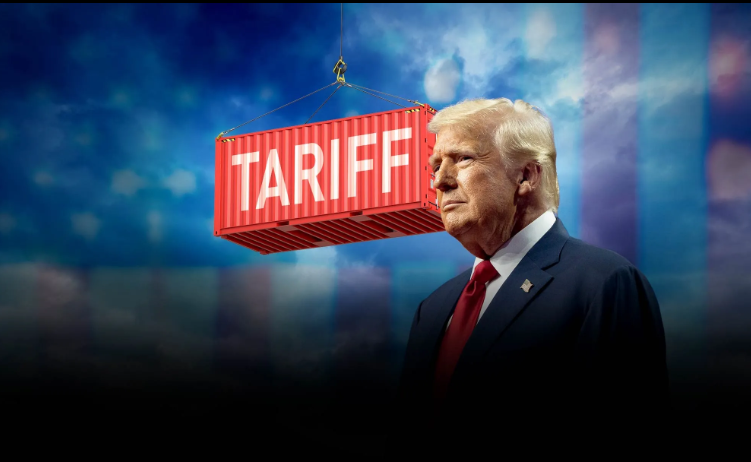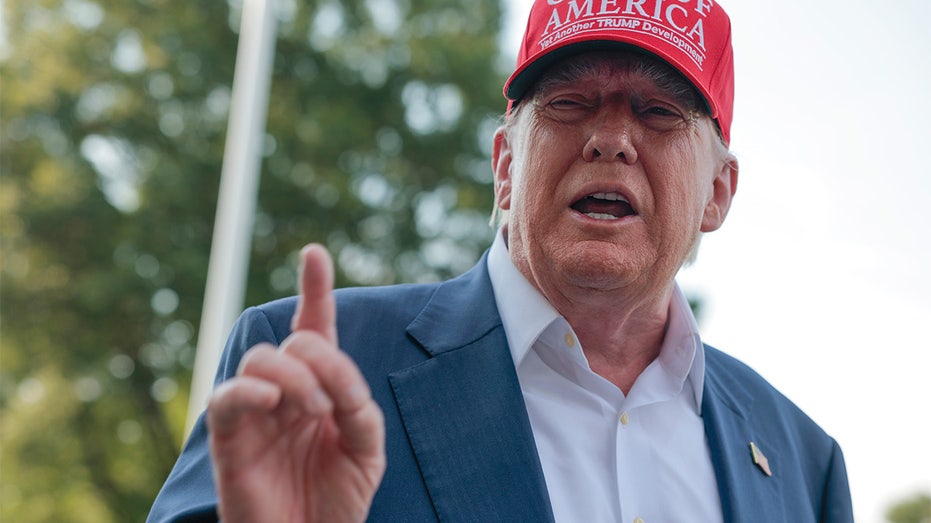US-Pakistan trade ties on thin ice after new tariff hike

By MG News | April 03, 2025 at 02:41 PM GMT+05:00
April 03, 2025 (MLN): US President Donald Trump has escalated the trade war by imposing a baseline 10% tariff on all imports, along with higher duties on key trading partners, including a steep 29% tariff on Pakistan.
Pakistan’s 58% tariff on U.S. goods has only added to the growing tension between the two countries over trade.
The United States has imposed varying ad valorem tariffs on different product categories exported from Pakistan, significantly affecting the country’s trade competitiveness.
According to the latest data, textile-related products, a key component of Pakistan’s exports, face some of the highest tariffs, with certain categories reaching up to 16%.
Other major export sectors, including footwear, man-made fibers, sugar confectionery, and cotton, are also subject to tariffs ranging between 4% and 10%.
These tariff barriers impact Pakistan’s ability to compete in the U.S. market, particularly in the textile and apparel sector, which remains a crucial pillar of the country’s economy.
Pakistan’s export receipts from the United States witnessed a steady rise from FY-20 to FY-22, peaking at over $7 billion before experiencing a decline in FY-23.
The initial growth reflected strong demand for Pakistani textiles, apparel, and other key exports, but the subsequent drop may be attributed to factors such as economic slowdown in the U.S., reduced consumer spending, supply chain disruptions, or tariff barriers.
Despite the decline, export earnings in FY-23 remained higher than pre-pandemic levels, highlighting the resilience of Pakistan’s trade with its largest export market.
The chart on U.S. reciprocal tariffs underlined varying tariff rates imposed by the United States on different countries.
Turkey, Brazil, Singapore, and China face some of the highest reciprocal tariffs, exceeding 30%, while countries like Colombia and the United Kingdom experience significantly lower tariff rates.
Vietnam, South Korea, Malaysia, and Australia also fall within the mid-range tariff brackets, reflecting the U.S. trade policy variations across different regions.
Global Economic Concerns
Trump’s latest tariffs have triggered fears of a global economic slowdown, with experts warning of a possible recession.
"Trump's tariffs carry the risk of destroying the global free trade order the United States has spearheaded since the Second World War," said Takahide Kiuchi, executive economist at Nomura Research Institute.
The newly imposed levies are expected to drive up consumer prices and dampen demand across international markets.
Defending his decision at a White House Rose Garden press conference, Trump emphasized the need to restore U.S. manufacturing capabilities.
He detailed the tariff increases, which include a 34% tariff on China, 20% on the European Union, and a 25% tariff on auto and auto parts.
With these measures, the average U.S. tariff rate has skyrocketed from just 2.5% in 2024 to 22%, a level not seen since 1910.
"This is a game-changer, not only for the U.S. economy but for the global economy," warned Olu Sonola, head of U.S. economic research at Fitch Ratings.
"Many countries will likely end up in a recession."
While IMF Managing Director Kristalina Georgieva downplayed immediate recession fears, she acknowledged that the Fund expects to slightly revise its 2025 global growth forecast of 3.3% downward.
The impact of Trump’s tariffs, however, will vary widely, with tariffs ranging from 10% on Britain to a staggering 49% on Cambodia.
Asian Economies Brace
Asian economies, in particular, are expected to suffer disproportionately.
"Not only do Asian economies face higher tariffs than many others, but they are also more dependent on U.S. goods demand than most," said Marcel Thieliant, head of Asia-Pacific at Capital Economics.
If the U.S. slips into recession due to the tariffs, developing economies closely tied to American markets could be hit hardest.
Financial markets have already reacted sharply. Stocks tumbled, and investors flocked to safe-haven assets such as bonds, gold, and the yen on Thursday, reflecting rising economic anxiety.
The uncertainty now lies in how global leaders will respond and whether a full-scale trade war is imminent.
New Tariffs Amid Trade Tensions
The base 10% tariffs will take effect on April 5, with the higher reciprocal rates following on April 9.
Trump framed the tariffs as a response to unfair trade barriers imposed on U.S. goods, arguing that these measures will boost domestic manufacturing.
"For decades, our country has been looted, pillaged, raped, and plundered by nations near and far," Trump declared in his remarks.
However, economists warn that the tariffs could drive up consumer costs, slow global trade, and increase financial strain on American families by thousands of dollars annually.
Political Fallout
The tariffs have drawn criticism from both Democrats and some Republicans.
Canada and Mexico, America’s two largest trading partners, already face 25% tariffs on many goods and will not be subjected to additional levies from this latest round of tariff hikes.
However, the U.S. Senate has responded with legislative pushback.
In a 51-48 vote, the Senate approved a bill to terminate Trump’s Canadian tariffs, with several Republican senators breaking ranks with the president.
Despite this, the bill’s passage in the Republican-controlled House remains unlikely.
Trump’s top economic advisor, Stephen Miran, defended the policy, telling Fox Business that while the tariffs may cause short-term disruptions, they will ultimately benefit the U.S. economy in the long run.
"Are there going to be short-term bumps as a result? Absolutely," Miran said. "But this is about securing America's economic future."
With the world now on edge, all eyes are on how global markets, U.S. trading partners, and political leaders will react in the coming weeks.
Trade between the U.S. and Pakistan, along with its relations with many global partners, is now at a crossroads after the recent round of tariff hikes.
With tensions already escalating, the steep increase in tariffs especially the 29% on Pakistan has further strained economic ties.
Although Pakistan’s exports to the U.S. showed growth in the past few years, the recent decline signals a shift in trade dynamics, likely influenced by escalating tariffs and evolving market conditions.
These developments raise concerns about the long-term impact of such tariffs, not only on Pakistan but on the broader global trade landscape.
As countries like Pakistan rely heavily on U.S. markets, these higher duties could significantly affect trade flows, prompting both nations to reconsider their strategies.
While the immediate effects are still unfolding, the changing environment hints at more volatility and unpredictability in the near future.
Copyright Mettis Link News
Related News
| Name | Price/Vol | %Chg/NChg |
|---|---|---|
| KSE100 | 131,949.07 198.95M |
0.97% 1262.41 |
| ALLSHR | 82,069.26 730.83M |
0.94% 764.01 |
| KSE30 | 40,387.76 80.88M |
1.11% 442.31 |
| KMI30 | 191,376.82 77.76M |
0.36% 678.77 |
| KMIALLSHR | 55,193.97 350.11M |
0.22% 119.82 |
| BKTi | 35,828.25 28.42M |
3.64% 1259.85 |
| OGTi | 28,446.34 6.84M |
-1.02% -293.01 |
| Symbol | Bid/Ask | High/Low |
|---|
| Name | Last | High/Low | Chg/%Chg |
|---|---|---|---|
| BITCOIN FUTURES | 108,125.00 | 110,525.00 107,865.00 |
-2290.00 -2.07% |
| BRENT CRUDE | 68.51 | 68.89 67.75 |
-0.29 -0.42% |
| RICHARDS BAY COAL MONTHLY | 97.50 | 0.00 0.00 |
0.75 0.78% |
| ROTTERDAM COAL MONTHLY | 106.00 | 106.00 105.85 |
-2.20 -2.03% |
| USD RBD PALM OLEIN | 998.50 | 998.50 998.50 |
0.00 0.00% |
| CRUDE OIL - WTI | 66.50 | 67.18 66.04 |
-0.50 -0.75% |
| SUGAR #11 WORLD | 16.37 | 16.40 15.44 |
0.79 5.07% |
Chart of the Day
Latest News
Top 5 things to watch in this week
Pakistan Stock Movers
| Name | Last | Chg/%Chg |
|---|
| Name | Last | Chg/%Chg |
|---|







 FX Reserves
FX Reserves
 CPI
CPI